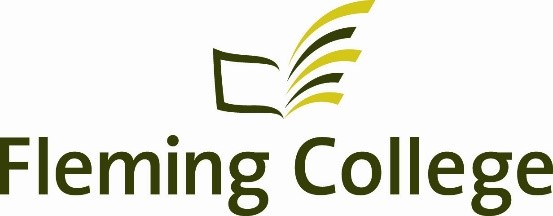
Well, at least for a post-grad GIS student…
Having recently graduated from the University of Ottawa with a BA Honors in Geography, the next step for me was clear. Although I achieved a minor in Geomatics and Spatial Analysis, personally, I did not think the technical training was intensive enough for what today’s GIS job market calls for. Solution? I opted for a post-graduate certificate in GIS at the Geomatics Institute of Fleming College, and just started this past September. Let the adventures begin!
The program offers two streams: Applications Specialist (AS) and Cartographic Specialist (CS). Students enrolled in the program share a common first semester, which allows all students to develop an understanding of the technologies and skills specific to each field. Initially, I enrolled in the Cartographic Specialist program. My intentions were based on the fact that in my university career, I had not encountered any courses dealing with map design and/or map communication at all. To me, it was almost a foreign concept.
Courses with a particular emphasis on cartography (in the common first semester) include Geodesy and Geovisualization. On the other hand, we have the applications side of things, which includes Spatial Analysis 1 and Problem Solving & Programming.
While I am enjoying my time at Fleming, about six weeks into the program I began questioning my program selection. Is CS for me, or do I want to switch into AS? Programming, or designing? So many questions, so little time. I say this because students need to decide in week 9 whether or not they are staying in their current program, or not. There were many talks of students switching within our program. Mostly, it seemed, students wanted to switch from AS to CS. I took it upon myself to gauge with other students, in order to find out the reasoning for remaining or switching from their current programs. My findings were generally homogenous.
Unfortunately, I didn’t hear much of people switching for their love of map design and effective cartographic communication. I wasn’t in the CS program for this reason either, though. Primarily, I was just curious about the principles of map design. Those passionate about design did in fact remain in the program, fortunately. Nevertheless, concerning the switch, most students had developed a feeling of indifference towards programming, and this seemed to be the main reason for transferring into the GIS – CS side of things. Programming is quite challenging, so I understand why it sent some people running.
Yet here I was, thinking the opposite. I want to switch into AS because it is more challenging. I understand that learning programming is comparable to learning a new language. It can be quite difficult and tedious at times, and it can even make you want to pull your hair out. But I learned to embrace that challenge. This type of thing (programming) is not self-taught. It is not learnt overnight. It takes practice, and persistence, and of course, a great instructor to get the ball rolling.
“With challenge comes great opportunity”. This is what I keep telling myself. A challenge is something that keeps me motivated, and always learning a new trick or two. I am looking forward to next semester, and diving deeper into the world of applications (AKA late nights in the lab). And who knows… my current hand of cards doesn’t hold cartography, but you never know what is going to be dealt your way.





Be the first to comment